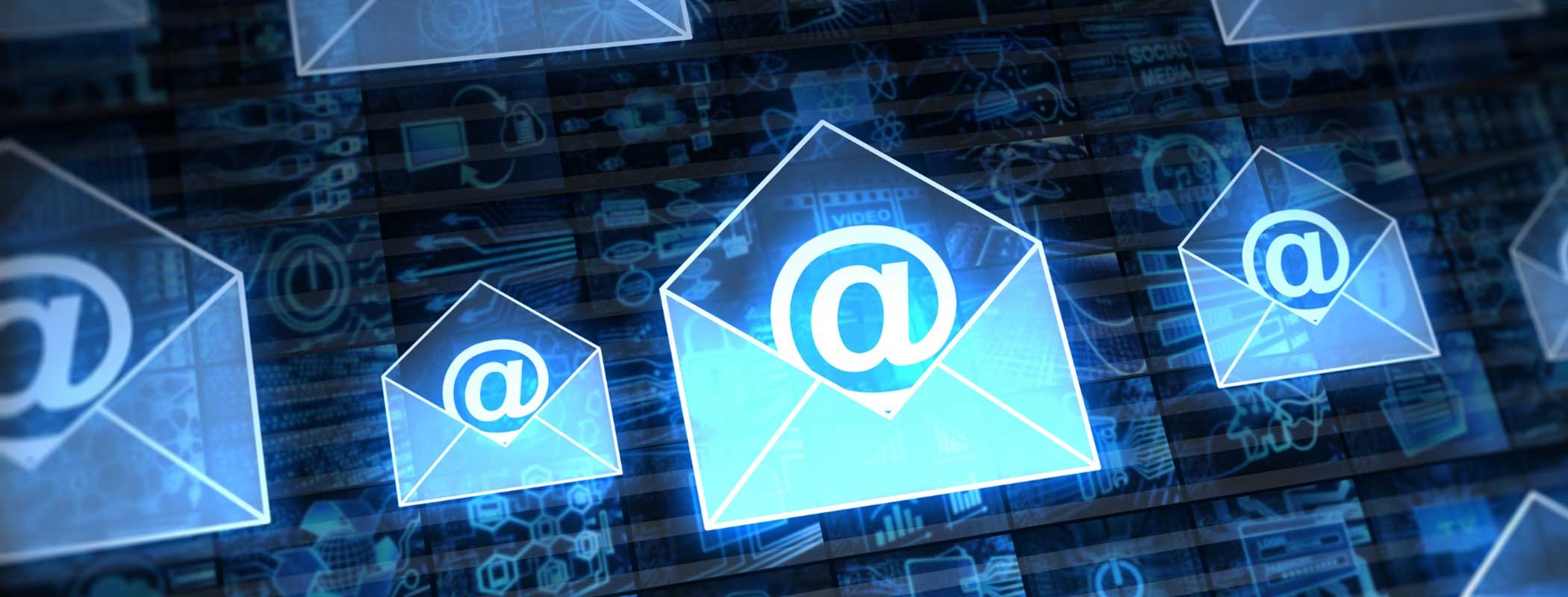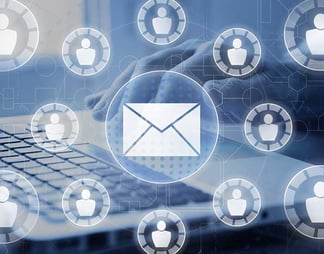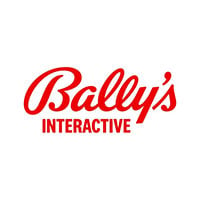
- Our Insights
- A Guide to Crafting An Effective Email Strategy
Introduction
Email marketing is one of the most powerful and cost-effective tools in a marketer's arsenal. It allows businesses to directly communicate with their audience, build brand loyalty, drive conversions, and maintain ongoing relationships. However, the effectiveness of an email marketing campaign depends on various factors.
This comprehensive guide covers the main facets of email marketing, including email deliverability, content creation, avoiding spam traps, list building, email frequency and timing, email automation, and measurement and analytics.
Email Deliverability
Deliverability is the unsung hero of email marketing. It determines whether your carefully crafted messages find their intended destination – your subscriber's inbox. In this section, we embark on a journey to understand the intricate world of email deliverability. We'll explore the factors that influence it, such as sender reputation, authentication protocols, and engagement metrics. By adopting best practices and optimizing your approach, you can ensure that your emails navigate the complex landscape of spam filters and successfully land in the inbox, ready to engage, inform, and inspire action from your recipients.
Achieving high deliverability rates is crucial for the success of your email campaigns. Email deliverability is calculated as follows:
(Total Emails Sent - Bounces) / Total Emails Sent)
Factors Affecting Deliverability
- Sender Reputation: ISPs (Internet Service Providers) assess the sender's reputation based on factors like bounce rates, spam complaints, and engagement metrics.
- Authentication: Implement SPF, DKIM, and DMARC protocols to verify the authenticity of your emails.
- Content and Engagement: Content that triggers spam filters, high unsubscribe rates, or low open rates can negatively impact deliverability.
Best Practices for Improving Deliverability
- Use a Dedicated IP: If possible, use a dedicated IP address for sending emails, which can enhance your sender reputation.
- Segment Your List: Send relevant content to specific segments of your audience to improve engagement.
- Monitor Bounces and Complaints: Regularly remove bounced or complained-about email addresses from your list.
Email Content
The heart of any successful email marketing campaign lies in its content. Your email's content is the bridge that connects your brand with your audience. It's a powerful medium for conveying your message, engaging your subscribers, and ultimately driving desired actions. In this section, we delve into the art of crafting engaging, relevant, and persuasive email content. From subject lines to compelling copy, visuals, personalization, and A/B testing, we explore the key elements that make your emails stand out in the crowded inbox, ensuring that your messages are not only opened but also acted upon.
Crafting Engaging Content
Compelling email content is vital for keeping subscribers engaged. Consider the following tips:
- Clear and Relevant Subject Lines: Use concise, attention-grabbing subject lines that accurately represent the email's content.
- Engaging Visuals: Incorporate images, videos, and well-designed templates to make emails visually appealing.
- Compelling Copy: Craft concise and persuasive copy that addresses the recipient's pain points and provides value.
Personalization and Segmentation
Personalization increases engagement. Segment your list based on demographics, behavior, or preferences, and tailor content accordingly.
Mobile Optimization
Ensure your emails are mobile-responsive, as a significant portion of recipients view emails on mobile devices.
A/B Testing
Regularly test different elements of your emails, such as subject lines, CTAs, and content, to identify what resonates best with your audience.
Avoiding Spam Traps
In the ever-vigilant world of email marketing, avoiding spam traps is a critical endeavor. These digital decoys are strategically placed to catch unwary or unscrupulous marketers in their tracks. In this section, we navigate the treacherous waters of spam traps, providing insights on how to recognize, avoid, and mitigate the risks associated with them. By focusing on permission-based marketing, list hygiene, and adherence to email regulations, you can safeguard your email reputation and ensure your messages reach the inboxes of genuinely interested recipients.

Identifying and Avoiding Spam Traps
Spam traps are email addresses set up to identify and catch spammers. Avoid them by:
- Using Permission-Based Lists: Only send emails to individuals who have opted in to receive them.
- Regular List Cleaning: Remove inactive or unengaged subscribers from your list.
List Hygiene
Your email list is the lifeblood of your email marketing efforts. However, a healthy list isn't just about its size; it's also about its quality. A clean and engaged list is crucial for achieving high email deliverability rates, open rates, and conversion rates. List hygiene is the process of regularly cleaning and maintaining your email list to ensure it remains free from inaccuracies, disengaged contacts, and potential sources of trouble. Let's explore the essential elements of list hygiene and why it's so vital for successful email marketing.
- Bounce Management: Bounces occur when an email cannot be delivered to the recipient's inbox. There are two types of bounces:
- Hard Bounces: These occur when an email is sent to an invalid or non-existent email address. Continuously sending to hard bounces can damage your sender reputation. Remove hard bounce addresses from your list immediately.
- Soft Bounces: Soft bounces are usually temporary issues like a full inbox or a server problem. Email marketing platforms often handle soft bounces automatically, but if an email address continues to soft bounce for several campaigns, consider removing it.
- Unsubscribes: Respect the preferences of your subscribers. Provide an easy way for recipients to unsubscribe from your emails, and promptly honor their requests. Failing to do so can lead to complaints and negatively impact your sender reputation.
- Engagement Monitoring: Regularly assess the engagement levels of your subscribers. Identify those who haven't opened or clicked on your emails in a long time. While it's essential to try to re-engage these contacts, it may be necessary to remove consistently unengaged subscribers to improve list quality.
- Complaints: High spam complaint rates can hurt your sender reputation. Minimize complaints by sending relevant and valuable content, using double opt-in methods for list building, and honoring unsubscribe requests. Track and address any complaints promptly.
- Duplicate Entries: Duplicate email addresses can skew your reporting and lead to over-messaging, which annoys subscribers. Ensure your list is free from duplicates, especially if you merge data from various sources.
- Role-based and Generic Email Addresses: Avoid sending emails to role-based or generic addresses like "info@company.com" or "support@domain.com." These addresses often have low engagement and can result in spam complaints.
- Regular List Scrubbing: Periodically conduct a comprehensive list scrubbing. Remove outdated and irrelevant addresses, as well as any emails associated with spam traps.
- Email Verification Tools: Consider using email verification services to check the validity of email addresses before adding them to your list. These tools can help prevent invalid addresses from causing bounces.
- List Segmentation: Segment your list to send more relevant content to specific groups of subscribers. This not only improves engagement but also minimizes the risk of unsubscribes and complaints.
List hygiene is an ongoing process that should be integrated into your email marketing strategy. Maintaining a clean list not only enhances deliverability but also ensures that your messages reach an audience genuinely interested in your content. By regularly practicing list hygiene, you'll be on the path to more effective email marketing campaigns, stronger relationships with subscribers, and a healthier sender reputation.
Permission-Based Marketing - Building Trust and Delivering Value
Permission-based marketing is a fundamental principle that underpins ethical and effective email marketing practices. It involves obtaining explicit consent from individuals before sending them marketing emails. This practice is not just a legal requirement in many regions but also a best practice that fosters trust, engagement, and positive long-term relationships with your subscribers. Here's a closer look at the key aspects of permission-based marketing and why it's crucial for your email marketing success:
- Consent and Opt-In Mechanisms: The cornerstone of permission-based marketing is consent. It means that recipients willingly agree to receive emails from you. This consent is typically obtained through opt-in mechanisms, which can be categorized into two types:
- Single Opt-In: Subscribers provide their email addresses and are added to your list without a confirmation step. While it's a quicker way to grow your list, it may lead to higher rates of invalid or mistyped email addresses.
- Double Opt-In (Confirmed Opt-In): Subscribers sign up, and then they receive a confirmation email requiring them to click a link to confirm their subscription. This method reduces the risk of fake or incorrect email addresses and is widely considered a best practice.
- Transparency and Privacy: Permission-based marketing places a high value on transparency and privacy. Clearly communicate what subscribers can expect when they sign up, including the type and frequency of emails. Also, assure them that their personal information will be protected and not shared with third parties.
- Unsubscribe Options: Every marketing email you send should include an easy and visible way for subscribers to unsubscribe. Honoring these requests promptly is not only a legal requirement (e.g., CAN-SPAM Act and GDPR) but also a demonstration of respect for your audience's preferences.
- Respecting Permissions Over Time: Permission isn't a one-time event; it's an ongoing commitment. Continue delivering the value your subscribers expect and avoid sending emails they didn't explicitly sign up for. Sending irrelevant or too-frequent messages can lead to unsubscribes and complaints.
- Legal Compliance: Different regions have specific laws governing email marketing practices, such as the General Data Protection Regulation (GDPR) in Europe and the CAN-SPAM Act in the United States. Ensure that your email marketing practices comply with these regulations to avoid legal issues and build trust with your audience.
- Relationship Building: Permission-based marketing fosters a relationship of trust between you and your subscribers. By respecting their preferences and delivering valuable content, you can turn one-time subscribers into loyal customers and advocates for your brand.
- Improved Deliverability: ISPs and email service providers favor senders who follow permission-based practices. This leads to better deliverability rates, ensuring your emails reach your audience's inboxes.
In summary, permission-based marketing is not only a requirement for legal compliance but a cornerstone for ethical and effective email marketing. By securing the explicit consent of your subscribers, respecting their preferences, and delivering valuable content, you not only avoid potential legal pitfalls but also build a foundation of trust and engagement that can drive long-term success in your email marketing campaigns.
List Building
Your email list is the foundation of your email marketing strategy, and its growth is vital to your success. In this section, we delve into the art and science of list building. We'll explore a variety of strategies, from website sign-up forms to enticing lead magnets and social media promotions, all aimed at expanding your subscriber base. We'll also discuss the critical decision between double opt-in and single opt-in, as well as the importance of adhering to regulations like GDPR and CAN-SPAM to maintain a healthy and compliant email list. Building and nurturing a high-quality email list ensures that your messages reach a receptive and engaged audience, setting the stage for impactful email marketing campaigns.

Strategies for Building an Effective Email List
Use various tactics like website sign-up forms, social media promotions, and lead magnets to grow your email list. Here are some strategies to help you grow a high-quality and engaged email list:
- Create Compelling Sign-Up Forms:
- Design visually appealing sign-up forms that are easy to find on your website and landing pages.
- Keep the form fields simple, usually just asking for a name and email address. Requesting too much information can deter potential subscribers.
- Use persuasive and concise call-to-action (CTA) copy to encourage sign-ups. For example, "Join our newsletter for exclusive updates."
- Offer Incentives (Lead Magnets):
- Provide an incentive for visitors to join your email list. This could be a free e-book, whitepaper, webinar, or discount code.
- Clearly communicate the value of the incentive to entice more sign-ups.
- Ensure that the incentive is relevant to your audience and aligns with their interests or needs.
- Implement Pop-Up and Slide-In Forms:
- Pop-up and slide-in forms can be effective at grabbing the attention of website visitors.
- Use them strategically to avoid annoying users. For instance, trigger them based on exit intent or after a certain amount of time spent on your site.
- Leverage Social Media:
- Promote your email sign-up on your social media platforms.
- Create compelling posts and use enticing visuals to encourage your social media followers to subscribe to your email list.
- Use Landing Pages:
- Design dedicated landing pages that focus on a specific offer or promotion.
- Include a prominent sign-up form on these pages to capture leads interested in that particular offer.
- Run Contests and Giveaways:
- Host contests or giveaways with the condition that participants provide their email addresses for entry.
- Ensure the prize appeals to your target audience.
- Leverage E-commerce Transactions:
- If you run an e-commerce store, offer customers the option to subscribe during the checkout process.
- Send post-purchase follow-up emails encouraging them to join your list for exclusive offers.
- Use Exit-Intent Pop-Ups:
- Implement exit-intent pop-ups that appear when a user is about to leave your site.
- Offer an incentive or encourage them to subscribe before they exit.
- Test and Optimize:
- Regularly test different sign-up form placements, copy, and incentives to see what works best for your audience.
- Analyze the data to refine your strategies over time.
Remember that building a quality email list takes time and patience. Focus on attracting engaged and interested subscribers who are genuinely interested in your content and offerings. Building a strong relationship with your email subscribers is often more valuable than having a large, unengaged list.
Double Opt-In vs. Single Opt-In
Consider implementing a double opt-in process where subscribers confirm their email addresses to reduce the risk of fake or mistyped emails.
The Advantages of Double Opt-In
Double opt-in, also known as confirmed opt-in, is a two-step process for obtaining subscriber consent for email marketing. It involves an initial sign-up followed by a confirmation step where the subscriber clicks a confirmation link in their email. This approach offers several key advantages:
- Enhanced Quality: Double opt-in ensures that your email list consists of engaged and genuinely interested subscribers. Since recipients must actively confirm their subscription, it filters out accidental or fraudulent sign-ups, resulting in a cleaner and more valuable list.
- Reduced Bounces: By confirming their email address, subscribers minimize the chances of typos or errors in their contact information. This leads to fewer hard bounces, which can negatively impact your sender reputation.
- Compliance: Double opt-in aligns with email marketing regulations like the General Data Protection Regulation (GDPR) and the CAN-SPAM Act. It demonstrates a commitment to respecting subscriber preferences and data privacy.
- Lower Spam Complaints: Subscribers who have confirmed their intent to receive your emails are less likely to mark your messages as spam. This helps maintain a positive sender reputation and ensures your emails reach the inbox.
- Engagement: Double opt-in subscribers are more likely to engage with your emails because they have actively shown interest in your content. This can lead to higher open rates, click-through rates, and conversions.
GDPR and CAN-SPAM Compliance
Adhere to email marketing regulations such as GDPR (for European audiences) and CAN-SPAM (for U.S. audiences) to maintain legal compliance.
Maintaining GDPR and CAN-SPAM Compliance
Adhering to email marketing regulations is not just a legal requirement but a fundamental practice that builds trust with your audience and safeguards your email marketing efforts. Two of the most significant regulations in this context are the General Data Protection Regulation (GDPR), which applies to European audiences, and the CAN-SPAM Act, which pertains to U.S. audiences. Here are some key points regarding compliance with these regulations:
GDPR (General Data Protection Regulation):
-
- Explicit Consent: Under GDPR, businesses are required to obtain explicit and freely given consent from individuals before sending them marketing emails. This consent should be informed, specific, and unambiguous.
- Data Protection: GDPR mandates that personal data be handled with care and protection. It's essential to secure the data of your email subscribers and provide transparency about how their information is used.
- Right to Access and Erasure: Subscribers have the right to access their data and request its deletion. Ensure your processes allow individuals to exercise these rights easily.
- Data Portability: GDPR also grants individuals the right to receive their data and transfer it to another service if they choose to do so. Your systems should support data portability.
- Data Protection Impact Assessment (DPIA): DPIAs are required for certain types of data processing activities. Conduct DPIAs when necessary to assess and mitigate risks to data subjects' rights and freedoms.
CAN-SPAM (Controlling the Assault of Non-Solicited Pornography And Marketing Act):
-
- Opt-Out Mechanism: CAN-SPAM requires that all marketing emails include a clear and easy-to-use method for recipients to opt out of future communications. Honor these opt-out requests promptly.
- Sender Identification: Clearly identify the sender in the "From" field and include a valid postal address in the email. This helps recipients recognize and trust the source of the email.
- Subject Line Accuracy: Ensure that your email subject lines accurately reflect the content of the message. Misleading subject lines can lead to violations.
- Commercial Content Disclosure: Make it clear that your email is commercial in nature and provide a physical postal address in the message.
- Message Labeling: CAN-SPAM requires you to label adult content if applicable. This ensures that recipients can filter or avoid such content.
- Third-Party Compliance: If you're using third-party vendors for email marketing, ensure they also comply with CAN-SPAM regulations.
Compliance with GDPR and CAN-SPAM regulations is essential not only to avoid legal penalties but also to establish a strong and trustworthy brand image. It demonstrates respect for user privacy and their right to control their inbox, leading to more engaged and satisfied email subscribers. Make sure to keep up with any updates or changes to these regulations to ensure ongoing compliance.
Email Frequency and Timing
The delicate balance between email frequency and timing can make or break your email marketing strategy. In this section, we explore the art of finding that sweet spot. Discover strategies for reaching your audience just often enough to stay top-of-mind without becoming an unwelcome guest in their inbox. We'll dive into the intricacies of timing strategies, uncovering the moments when your audience is most responsive. Moreover, we'll discuss the importance of frequency testing to ensure that your email communication remains both effective and appreciated by your subscribers. Mastering the rhythm of your email campaigns is essential for achieving your marketing objectives while maintaining a positive sender reputation.
Finding the Right Balance
Balance email frequency to avoid overwhelming subscribers while staying top-of-mind.
Timing Strategies
Experiment with different sending times to identify when your audience is most responsive.
Frequency Testing
Regularly monitor engagement metrics to fine-tune your email frequency.
Email Automation
In the fast-paced world of email marketing, automation emerges as a game-changer. In this section, we explore the numerous benefits of email automation and how it can transform your campaigns. Learn about the power of triggered and drip campaigns, where emails are sent based on specific actions or timed intervals, efficiently nurturing leads and guiding subscribers through their unique customer journeys. From onboarding sequences that engage new subscribers to abandoned cart reminders and personalized recommendations, discover how automation streamlines your efforts, saves time, and ensures your audience receives relevant, timely messages that drive conversions and build lasting customer relationships.
Benefits of Email Automation
Automated email campaigns save time and deliver relevant content at the right moments. Let’s explore the key benefits in more detail:
- Efficiency and Timesaving: One of the most significant advantages of email automation is its ability to save time. Repetitive tasks, such as sending welcome emails, transactional messages, or follow-up emails, can be automated, freeing up valuable time for your marketing team to focus on more strategic and creative aspects of your campaigns.
- Consistency and Timing: Automation ensures that your emails are sent at precisely the right moment in the customer journey. Whether it's a series of onboarding emails for new subscribers or timely abandoned cart reminders, you can consistently deliver messages when they are most relevant, enhancing engagement and conversions.
- Personalization at Scale: With automation, you can personalize your email content and timing for each recipient, even if you have a large subscriber list. By using customer data and behavior triggers, you can create tailored messages that resonate with individuals, making your emails more compelling and effective.
- Nurturing Leads: Email automation allows you to nurture leads through carefully designed drip campaigns. By delivering a sequence of emails over time, you can guide potential customers through the purchase funnel, providing them with valuable content and building trust until they are ready to convert.
- Cart Abandonment Recovery: E-commerce businesses can recover potentially lost sales by using automation to send targeted reminders to customers who have abandoned their shopping carts. These reminders can include incentives, such as discounts or free shipping, to encourage completion of the purchase.
- Customer Retention: Automation isn't just for acquiring new customers; it's also a powerful tool for retaining existing ones. You can send personalized product recommendations, anniversary offers, and feedback requests to keep your customers engaged and satisfied.
- Segmentation and Targeting: Automation enables you to segment your email list based on various criteria, such as demographics, behavior, or purchase history. By delivering highly relevant content to each segment, you increase the chances of engagement and conversion.
- Feedback and Surveys: You can use automated emails to gather valuable feedback from your customers through surveys and review requests. This information can help you make data-driven decisions and improve your products or services.
- Reporting and Analytics: Most email automation platforms provide in-depth reporting and analytics features. You can track key performance metrics, such as open rates, click-through rates, conversion rates, and revenue generated, allowing you to measure the impact of your automation sequences and make data-driven improvements.
- Cost-Effectiveness: While there may be initial setup costs and subscription fees associated with automation platforms, the long-term cost savings are substantial. With increased efficiency and better-targeted campaigns, you can achieve a higher return on investment (ROI) from your email marketing efforts.
- Scalability: Email automation is highly scalable. Whether you have a small subscriber list or a massive database, automation can adapt to your needs. As your business grows, automation can help maintain personalized communication with a larger audience.
Triggered and Drip Campaigns
Set up triggered emails based on specific actions or time intervals. Drip campaigns nurture leads over time.
Nurturing and Onboarding Sequences
Create sequences to guide subscribers through the customer journey, from onboarding to conversion.
Measurement and Analytics
In the world of email marketing, data is your compass, guiding your campaigns to success. In this section, we delve into the crucial role of measurement and analytics in email marketing. Explore the key email metrics that provide valuable insights into the performance of your campaigns, including open rates, click-through rates, conversion rates, and unsubscribe rates. We'll also uncover the tools and platforms that enable you to collect, analyze, and interpret this data, empowering you to make informed decisions.
Regularly measuring and analyzing your data allows you to fine-tune your strategy, optimizing content, frequency, and targeting to meet your evolving goals. By embracing data-driven decision-making, you can adapt to changes in your audience's behavior and preferences, ensuring that your email marketing remains effective and impactful in the ever-evolving digital landscape.
Key Email Metrics
Track metrics like open rates, click-through rates, conversion rates, and unsubscribe rates to assess your campaign's effectiveness.
- Delivery Rate: calculates the percentage of emails successfully delivered to the recipients' inbox. A high delivery rate indicates good email deliverability.
Formula: (Total Emails Sent - Bounces) / Total Emails Sent
- Bounce Rate: measures the percentage of emails that were not delivered due to various reasons, such as invalid email addresses (hard bounces) or temporary issues (soft bounces).
Formula: (Number of Bounces / Total Emails Sent) x 100
- Open Rate: tracks the percentage of delivered emails that were opened by the recipients. A higher open rate often indicates that your emails are making it to the inbox and engaging recipients.
Formula: (Unique Opens / Total Emails Delivered) x 100
- Click-Through Rate (CTR): measures the percentage of recipients who clicked on one or more links within your email. It indicates the level of engagement with your email content.
Formula: (Unique Clicks / Total Emails Delivered) x 100
- Unsubscribe Rate: calculates the percentage of recipients who opted out of your email list after receiving an email. A high unsubscribe rate may indicate email content or frequency issues.
Formula: (Number of Unsubscribes / Total Emails Delivered) x 100
- Spam Complaint Rate: measures the percentage of recipients who marked your email as spam. High spam complaint rates can harm your sender reputation.
Formula: (Number of Spam Complaints / Total Emails Delivered) x 100
- Inbox Placement Rate: tracks the percentage of emails that successfully land in the recipients' primary inbox folders rather than in spam or other folders.
Formula: (Number of Emails in the Inbox / Total Emails Delivered) x 100
- Forward Rate: indicates how often recipients share your email content with others, which can be a sign of engagement and quality content.
Formula: (Number of Forwards / Total Emails Delivered) x 100
- List Growth Rate: measures the rate at which your email list is expanding. It's important for maintaining a healthy and engaged audience.
Formula: ((New Subscribers - Unsubscribes - Email Addresses Removed) / Total Email List Size at the Beginning of the Period) x 100
Tools & Platforms
Here are some of the popular tools and platforms that enable you to collect, analyze, and interpret email data:
- Google Analytics: Google Analytics can be used to track email marketing performance, including website traffic, conversions, and user behavior following clicks from email campaigns.
- Email Service Providers (ESPs): ESPs like Salesforce Marketing Cloud, Adobe Campaign, MailChimp, Constant Contact, Acoustic and HubSpot often provide built-in analytics tools to track email open rates, click-through rates, and other key metrics.
- Marketing Automation Platforms: Platforms like Marketo, Braze, Segment, and Eloqua enable businesses to create and schedule email campaigns. They can send personalized and targeted email messages to specific segments of their audience, trigger emails based on user behavior, and automatically send follow-up emails, such as welcome emails, drip campaigns, and abandoned cart reminders.
- Email Marketing Analytics Software: Tools like Litmus and Email on Acid help you assess the effectiveness of your email campaigns by providing detailed insights, including email rendering, client usage, and engagement metrics.
- Email Marketing Services: Platforms such as SendGrid provide advanced email analytics to track delivery, opens, and clicks, and often offer A/B testing capabilities.
- Email Deliverability Tools: Tools like Validity can help monitor your sender reputation and deliverability rates, offering insights to improve your email deliverability.
- Heatmapping Tools: Tools like Heatmap.me or Crazy Egg can help you visualize how recipients engage with your email content, identifying hotspots and areas that need improvement.
- A/B Testing Tools: Services like Optimizely or VWO enable you to perform A/B tests on different email elements and gather data on what works best for your audience.
Choosing the right tools and platforms depends on your specific needs, budget, and the level of sophistication you require in your email marketing analytics. Make sure to select the ones that align with your goals and allow you to measure the success of your email marketing campaigns effectively.
Conclusion
An effective email marketing strategy encompasses various facets, including deliverability, content quality, avoiding spam traps, list building, email frequency and timing, email automation, and measurement and analytics. By following best practices in these areas, businesses can harness the power of email marketing to build and nurture customer relationships, drive conversions, and achieve their marketing objectives.
As technology evolves and consumer preferences change, email marketing will continue to adapt. Staying up to date with industry trends and best practices is essential for continued success in this ever-evolving field.
Keep in mind that successful email marketing is an ongoing process that requires continuous monitoring, optimization, and adaptation to changing market dynamics and customer preferences. With the right strategy and commitment to best practices, email marketing can be a powerful tool for businesses to connect with their audience and achieve their marketing goals.
LET'S GET TO WORK










